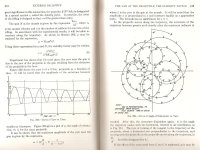I understand the basics of twist in a barrel, and that there are differences in caliber, bullet mass and other factors.
Can someone point me to a detailed technical reference or discussion, including the physics and equations involved of how to precisely calculate the optimum twist for a given circumstance? I'm less interested in the "rules of thumb", but would rather understand the details. Does such a reference exist? Most of the references I've seen make assumptions based on the 1879 Greenhill rule of thumb. Calculus is ok.
Thanks.
Can someone point me to a detailed technical reference or discussion, including the physics and equations involved of how to precisely calculate the optimum twist for a given circumstance? I'm less interested in the "rules of thumb", but would rather understand the details. Does such a reference exist? Most of the references I've seen make assumptions based on the 1879 Greenhill rule of thumb. Calculus is ok.
Thanks.

